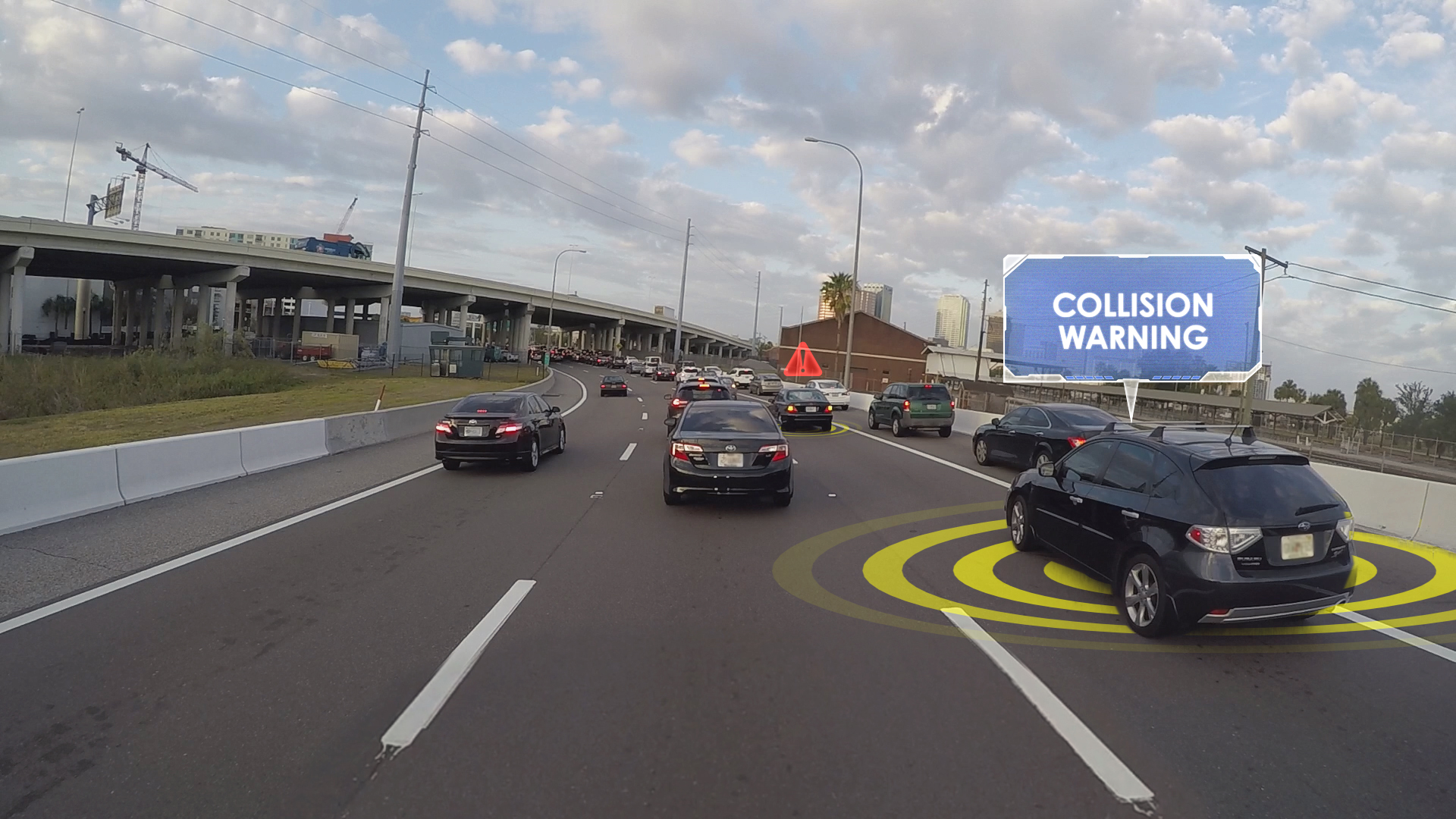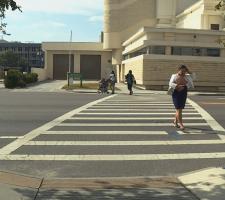
The
The programme is a national effort to deploy, test and operationalise cutting-edge mobile and roadside technologies and enable CV applications to save lives, improve personal mobility, enhance economic productivity, and reduce environmental impacts. USDoT has designated three connected vehicle pilots – Wyoming, New York City and Tampa, Florida – to deploy connected vehicles on city streets and highways.
Starting in September 2015 with each site preparing a deployment concept, the long-term project will continue through 2019. The three sites are now midway through a 20-month phase 2 which is expected to continue into next year while phase 3 expands the programmes to real-world operation.
Total funding for the three pilot programmes amounts to more than $45 million. Phase 1 was funded completely by USDoT which also provided 80% of the funding for phases 2 and 3, with the local agencies contributing the remaining 20%. In addition to funding, the USDoT is playing an active role in the pilots.
“USDoT is a partner,” said Robert Frey, planning director with Tampa-Hillsborough County Expressway Authority (THEA). “They are involved intimately with the process and approve every document. They provide technical expertise in the form of USDoT staff, consultants and support personnel - this is definitely a team project. We have dealt with everything from security to how to strap the roadside units on light poles, and USDoT has been involved in all of it.
“All three pilot sites have been working together very closely since the beginning,” Frey adds. “USDoT is strongly stressing collaboration and interoperability.”
Multiple partnerships
THEA is running the Tampa pilot, with a team including
The Tampa pilot will be using dedicated short range communication (DSRC) on the Selmon Expressway and several streets throughout the area. The project’s goals include alleviating congestion and improving safety during morning commuting hours; reducing the number of wrong-way drivers in express lanes; improving pedestrian safety; and minimising conflicts between streetcars and traffic.
Frey explained: “No tax dollars were used for the local match. The entire local match was provided by THEA. Tampa is lucky that we have two partners that have undertaken corridor improvements to help make this project work, the City of Tampa and Florida DoT-D7.”
THEA has several other collaborators on the pilot. The Center for Urban Transportation Research (CUTR) at the University of Southern Florida is handling all the performance measurements and evaluation. In addition, the University of Arizona Engineering Department is providing ISIG, an application for roadway operations.
THEA also met with the Crash Avoidance Metrics Partnership (CAMP) – a consortium of auto OEMs led by
“CAMP made us rethink a few things. We learned that the automakers do not use the same vocabulary as the road operators and that their testing expectations were different. On several applications we changed our algorithms and vocabulary to better reflect what we were doing,” says Frey.
Another important collaborator is the Tampa-based public. THEA is currently recruiting volunteer drivers and pedestrians for the pilot, expecting to equip approximately 1,600 privately owned automobiles with CV technology by May 2018.
Meanwhile, pedestrian volunteers are invited to download THEA’s smartphone app that activates crosswalk signals on Tampa’s Meridian Avenue.
Frey concluded: “I believe the technology is not the focus. Being able to take the technology and implement it to solve problems is the focus. New technology will always be coming, but are we visionary enough to use it for the public good?”
Hurricane Irma
In the middle of phase 2, the Tampa pilot faced an unexpected challenge. The second week in September 2017, the world watched as Irma, a category 5 hurricane, battered islands across the Caribbean and moved menacingly toward Florida. Although the impacts on Tampa were not as severe as expected, as the hurricane downgraded to category 2, the city still faced daunting challenges, such as massive power outages. ITS International asked THEA’s Bob Frey if the hurricane impacted the Tampa CV pilot.
“We have hurricane season every year, so the transportation professionals in this area are used to being flexible under these circumstances and the procedures are in place,” Frey explained. “That makes shifting from our day-to-day jobs to emergency management easier.”
The impacts Hurricane Irma had on THEA and the Tampa pilot included suspending work on roads, evacuation meetings, suspension of tolling, and communication messaging requirements being coordinated with the local and state governments. Frey says these are all skill sets they also use on the CV Pilot, “so the Pilot had to take a back seat for a while.”
“Now that the storm has passed I am happy to report that Hurricane Irma’s arrival did not impact our overall schedule besides requiring us to make adjustments to our installation schedule,” he added.
“When storms come, we still need to be flexible, but maybe CV technologies can make these difficult situations a little easier for the average person to stay safe.”
Pedestrian safety
NYCDoT is leading the New York City pilot, also in phase 2, with pedestrian safety as one of its main focuses and two pedestrian applications forming part of the project. The first alerts vehicles turning into crosswalks to detect pedestrian presence while the second assists visually impaired pedestrians in the crosswalk.
For vehicles, the roadside unit (RSU) utilises a traffic signal controller, routing an audio message to the driver. For visually impaired pedestrians, the RSU detects the pedestrian’s presence in the crosswalk or at the intersection corner, and an audio message is sent to their smartphone via Wi-Fi or Bluetooth, notifying them of the time remaining to cross the street.
Other main focuses of the NYC pilot are Vehicle to Vehicle (V2V) and Vehicle to Infrastructure (V2I) applications and NYCDoT is currently engaged in the vendor selection process.
The pilot area encompasses three areas in the boroughs of Manhattan and Brooklyn including a 6.4km (4mile) segment of FDR Drive. Prior to real-world deployment, NYCDoT is using a large government-owned parking lot near JFK Airport for CV demos.
In terms of the fleet, participating entities include UPS plus New York City’s DoT, Transit Authority, Taxi and Limousine Commission and Department of Sanitation. Users of the pedestrian application will be volunteers.
According to the USDoT: “Connected vehicle technology has yet to be deployed in a high-density environment like New York City. With its mix of high pedestrian and vehicle traffic and commercial and residential areas, the New York City Connected Vehicle Pilot will be a model for future large-scale deployments in urban environments.”
Wyoming hits the highway
Wyoming DoT (WYDoT) is leading the Wyoming pilot, focused on interstate highways. Also in phase 2, the project’s goals include improving highway traffic and weather data in the state’s traffic management centre in order to reduce the number and severity of adverse weather-related incidents in the I-80 Corridor.
The Wyoming pilot will trial a number of technologies including forward collision warning, infrastructure-to-vehicle (I2V) situational awareness, work zone and spot weather impact warning and distress notification.
WYDoT is deploying 75 Lear RSUs along highway I-80, and 400 OBUs. Testing will begin on WYDoT fleet vehicles – including highway patrol vehicles, snowploughs and other partner vehicles – in the autumn/winter of 2017-2018. The pilot will expand to testing other vehicles in the autumn/winter of 2018-19.







